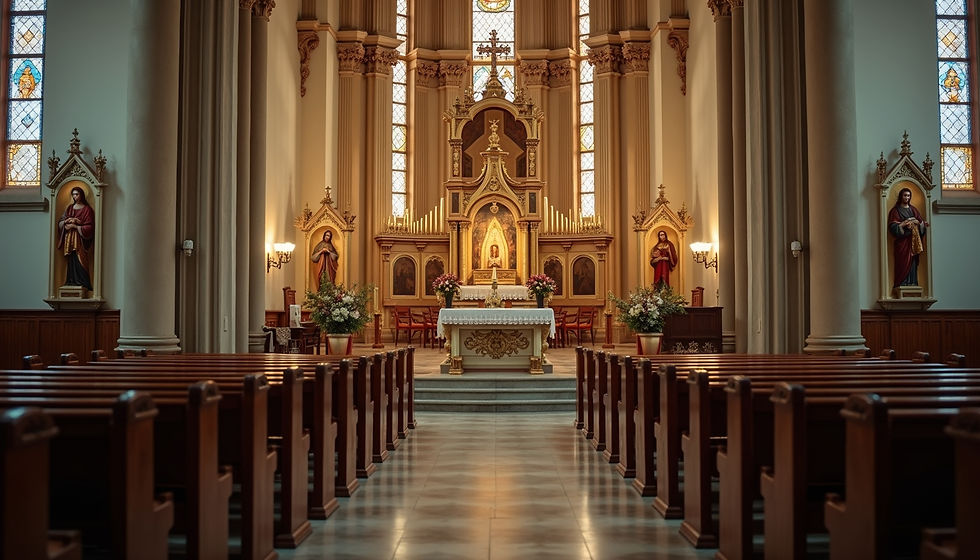Catholic Priests Are Not the Only Exorcists
- Jul 19
- 3 min read
Updated: Jul 20
Exorcism, the practice of driving out evil spirits from people or places, has a long history across many cultures and religions. While Catholic priests are commonly recognized as exorcists, they are by no means the only ones. Various forms of exorcism exist around the world that highlight diverse beliefs about the supernatural. This post will uncover the different types of exorcists across cultures and explore the uniqueness of their practices.
Understanding Exorcism
Exorcism is understood as the act of liberating a person or location from spiritual impurities or demonic possession. The rituals can differ widely among cultures and religions, but they usually involve prayer, the recitation of sacred texts, and sometimes physical actions like gestures and anointing. For many believers, these practices offer a route to restoring balance and order when faced with perceived evil forces. While exorcism is often linked with Christianity, similar rituals are found in many other spiritual traditions.
Exorcism in Various Religious Contexts
1. Catholic Exorcism
Catholic exorcism is the most publicly acknowledged form of exorcism. The Catholic Church outlines specific procedures for carrying out exorcisms in the Rituale Romanum, a key liturgical book. Only a priest authorized by a bishop can perform an exorcism, which underscores its seriousness.
In 2018, the Archdiocese of Rome reported a 30% increase in requests for exorcisms. This trend reflects a growing interest in the spiritual world and the belief that evil can manifest in many forms.

2. Islamic Exorcism
Within Islam, exorcism is referred to as Ruqyah. This involves reciting specific verses from the Quran and performing prayers to address ailments thought to be caused by jinn, supernatural entities according to Islamic belief.
Typically, Ruqyah is conducted by trained imams. For instance, a study published in the Journal of Religion and Health in 2019 noted that 76% of participants who underwent Ruqyah reported relief from spiritual afflictions, indicating its effectiveness as perceived in the Islamic community.
3. Hindu Exorcism
Hinduism offers a range of rituals designed to counteract negative energies and spirits. Practices may include Homa (fire offerings) and chanting of mantras, often led by priests known as purohits.
For example, during the Navratri festival, many Hindu households perform rituals to cleanse their space of negativity, illustrating the strong link between spiritual health and environment. These practices emphasize offerings to deities as a way to invoke protection.

4. Indigenous Practices
Indigenous cultures worldwide perform exorcisms in ways deeply tied to their spiritual beliefs. For example, many Native American traditions include shamans who conduct rituals to free individuals from negative spirits. This may involve drumming, singing, and utilizing herbs.
These rituals highlight a profound relationship with nature, as many shamans believe that individual well-being is linked to environmental health. A survey of Native American healing practices revealed that 85% of participants valued spiritual healing through traditional methods, indicating its importance in their communities.
5. Buddhist Practices
Buddhism approaches the concept differently. While it does not emphasize possession in the same way as other religions, certain practices offer similar healing. Tibetan Buddhism employs Chöd rituals, which aim to confront and release inner fears and negative emotions.
These rituals include offerings to spiritual beings and meditative techniques that encourage achieving peace. Practitioners often report that regular Chöd practice allows them to manage their fears more effectively, leading to reduced anxiety levels as shown in various mindfulness studies.
Cultural Representations and Misunderstandings
Media often dramatizes exorcisms, creating misconceptions about their meaning and impact. Movies frequently portray these encounters as terrifying battles against evil, overshadowing the healing dimensions highlighted by many practitioners.
Additionally, the association of mental health issues with demonic possession can mislead those unfamiliar with these spiritual practices. Most religions that practice exorcism stress the distinction between the two, encouraging a better understanding of their purpose as a form of spiritual healing.
Broader Perspectives on Exorcism
Exorcism isn’t limited to the Catholic Church; it has rich variations across multiple cultures and religions. Each form provides insight into unique understandings of the spiritual realm and highlights the struggles of individuals facing life's challenges.
From Ruqyah in Islamic culture to the rituals of Native American shamans, these practices reveal that many cultures share the fundamental urge for healing and protection against unseen forces. Acknowledging these diverse forms of exorcism fosters respect and appreciation for the different spiritual paths people take, enriching our understanding of human experience.

_________________________________________________________________________
Katta Mapes, M.A, M.Ed., is a Bilingual Intuitive Life Coach, Book Author and Freelance Writer offering creative insight and guidance for clarity and understanding in your life as she calls on the wisdom of the sages from throughout the ages to nurture your social, emotional and spiritual well-being. Her classes and private sessions are available to you in person, by phone and on Zoom. Katta.Mapes@gmail.com ~ Habla español



Comments